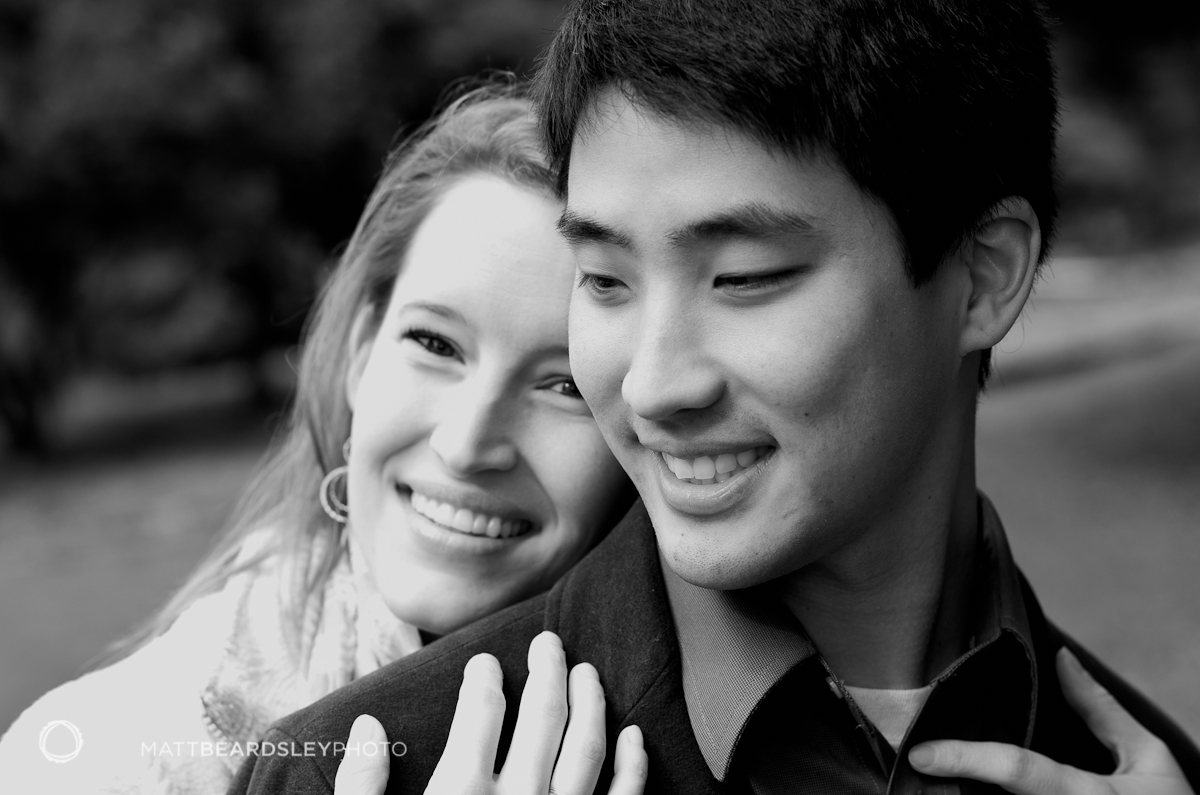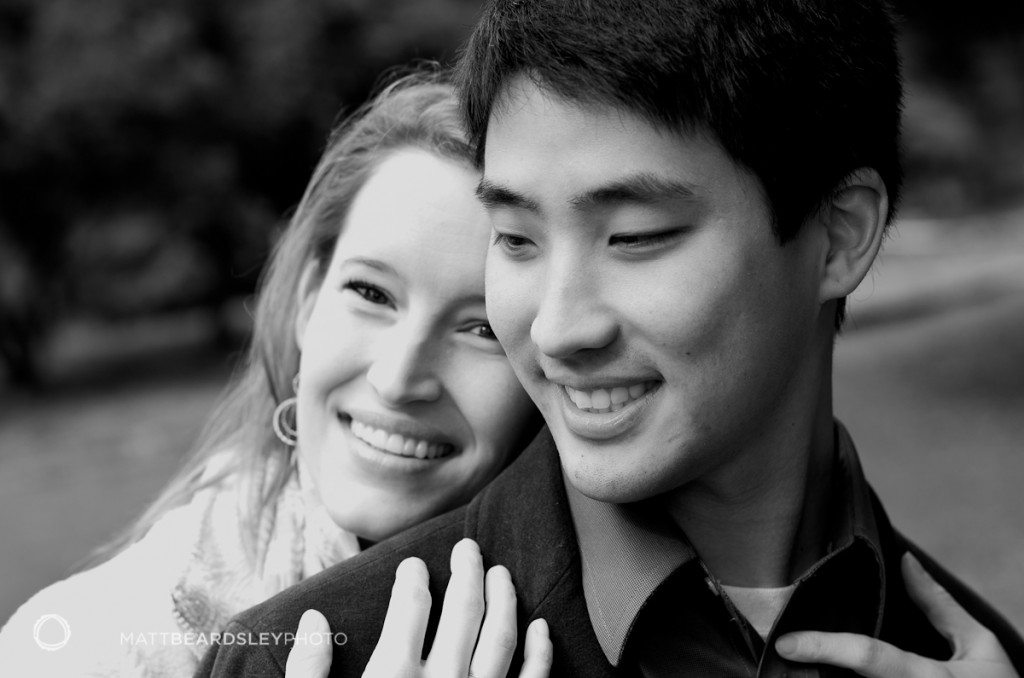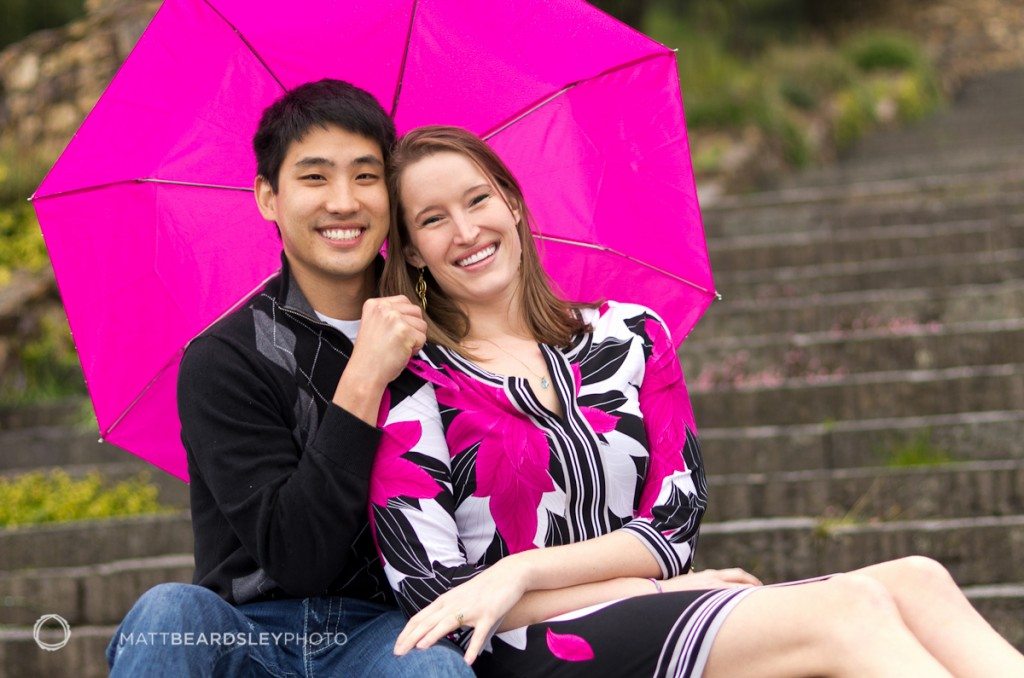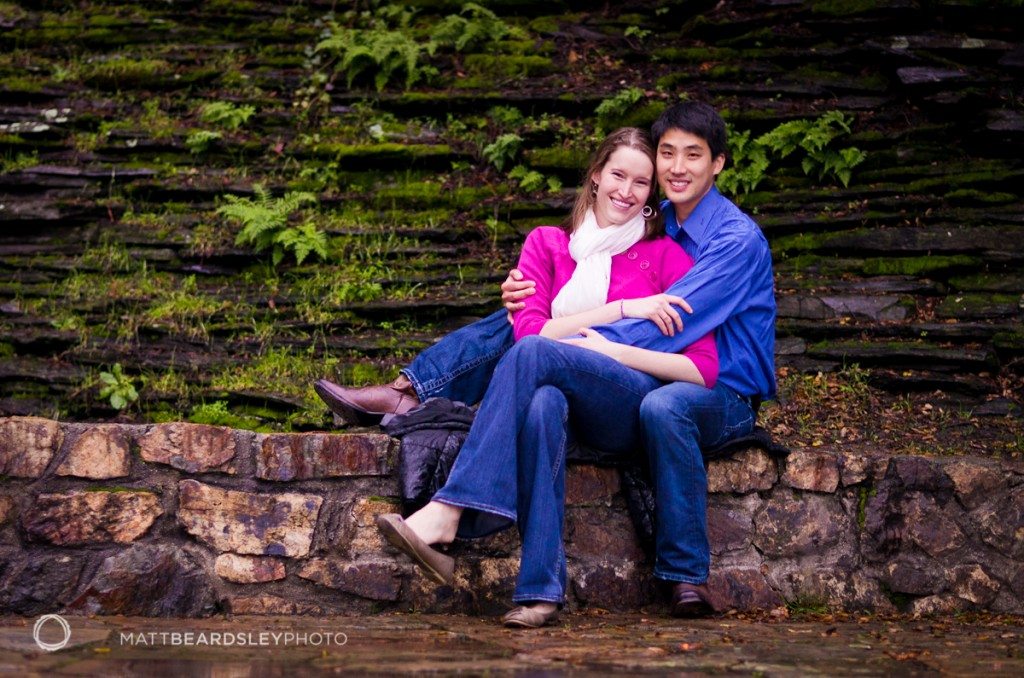Last Updated on 07/17/2011 by Chris Gampat
This week, I took our Pentax K-5 along on an engagement portrait shoot in the scenic Oakland hills, and – for the third field test in a row with the robust little Pentax – it was raining. I will say, without hesitation, that we have tested and proved the weather sealing of both camera and 55mm f/1.4 DA* lens. In our previous entry (here) I discussed both the camera’s discreet and capable handling while photographing a wedding (a rainy wedding) and a critical issue of purple fringing in certain images.
Before reading this posting, you may want to read about it used at a wedding, in tough weather, and my initial feelings.
The Pentax K-5 and Portrait Photography
The fringing is certainly an issue I hope to see Pentax acknowledge and address via firmware update. In the meantime, it’s difficult to find fault with this high-end crop-sensor 35mm DSLR. As with previous tests, I enjoyed using it on a portrait shoot. It is quick, smart, smooth, and fun to shoot, and the Pentax SMC DA* 55mm f/1.4 SDMis an exceptional portrait lens with painterly out-of-focus areas and smooth contrast, color, and sharpness. Both are also nicely weather sealed (and what other Website would go the extra mile and test that for you?)
Automatic Metering
I rarely take a camera out of manual exposure mode. It is such a studied habit to pick an exposure and shoot a set of consistent images, with only occasional adjustments to depth of focus or brightness. Most modern DSLRs do a good job selecting for themselves settings in P, A, or S modes, but most professional photographers are reluctant to surrender creative control. The Pentax K-5 is perhaps the first camera I’ve used for a portrait shoot that I would trust to pick exposure settings. It is amazingly customizable, including “Program Line” adjustments to veer selected settings towards blurring backgrounds, action, wide depth of focus landscapes, etc. The settings it picks, more importantly, are consistently spot on.
With the San Francisco Bay Area’s rolling cloud cover and frequent exposure changes, the camera’s Aperture Priority setting saved the day, with consistent F/2.0 blurry backdrops and the changing light neutralized by the camera’s smart shutter speed selections. I find the K-5to be a dependable partner on a shoot, able and willing to automatically select every setting or be fully manually controlled.
The camera’s metering can be set for average, center weighted, or spot mode via the flat wheel below the exposure mode dial. The two controls are a bit out of place on the K-5for their relatively flimsy build (when compared to the beefiness of the rest of the camera) but work well and are easy to read and operate, even in low light and with cold, wet fingers. The very capable average setting makes the other two settings less critical. The K-5
does a great job picking settings to nicely emphasize portrait subjects.
To sum it up, the Pentax K-5is among the best cameras on the market at metering and selecting exposure mode settings automatically. It continues Pentax’s DSLR tradition of cameras designed to be fully manual, care-free automatic, or anywhere in between.
Portrait Image Quality
Natural-light portrait shoots, like our test here, can play well to some of the Pentax K-5‘s strengths. In terms of image quality, the camera does a nice job rendering smooth contrast, accurate and believable colors, and a lightly-textured sharpness that I find flattering for portrait subjects. Given the overcast day and dim December afternoon light, I chose to shoot some of these at ISO 800 which rendered clean, usable results with grain only visible at close inspection.
The 55mm f/1.4 DA* is a good choice for portrait photography. On the K-5 it is a rough equivalent to a full frame 85mm (a standard portrait lens, and we said rough equivalent). The 55mm, as you can see in the test images, allows smooth falloff to liquidy out-of-focus areas and sharp, nicely detailed subjects. The images here have been adjusted with Adobe Photoshop Lightroom 3‘s automatic lens profile corrections which support both the K-5
and 55mm f/1.4 DA*.
One image quality area of caution would be skin tone highlights. During our test shoot, the camera was relatively quick to let skin tone highlights clip or “blow out” at times when other cameras might have held on to detail. K-5 owners might find themselves slightly underexposing in situations like this to preserve skin detail, while many competing cameras tend to yield better results with slight over-exposing. It’s not a problem, but an interesting observation.
As a summary of the camera’s portrait image quality, I’d say it does a very nice job generating clean, workable files that can be creatively processed. It captures a wide range of neutral color, fine detail, and attractive contrast. I still found worrisome evidence of the camera’s critical purple fringing issue discussed in my Day 3 Entry, though it was much less noticeable in this day’s even overcast light.
Conclusion, Day 4
The Pentax K-5 continues to be a fun little camera to shoot. I’ve enjoyed using it as both a landscape and portrait camera. It is uniquely customizable, offering many options for controls and file output. On a portrait shoot – even in the rain – it provides easy operation, smooth autofocus and metering and will bring home attractive images with good color, detail, and contrast. I continue to be impressed with it’s compact size and comfortable ergonomics. Check back soon for Day 5!
If you have any questions about the camera and lens combo, let us know in the comments below. I’d love to help. Also be sure to check out my own blog!
Please Support The Phoblographer
We love to bring you guys the latest and greatest news and gear related stuff. However, we can’t keep doing that unless we have your continued support. If you would like to purchase any of the items mentioned, please do so by clicking our links first and then purchasing the items as we then get a small portion of the sale to help run the website.






